Primary Arms Staff

Most days, catastrophe is hard to imagine.
After all, modern technology affords us many conveniences. Walk into any store, and you’re surrounded by thousands of fresh new products. In times like these, a word like ‘shortage’ can almost lose meaning.
Then, almost overnight, shelves go empty.
Still, many Americans have never considered their disaster preparedness until recently. No matter who you are—no matter how you live—preparedness is a virtue that almost always pays through, even when it’s as small as keeping a list of necessities. Whether you’re hunkering down or evacuating, preparedness is your best chance at staying safe and healthy.
But how should someone prepare for disaster?
In this blog, we’re taking a close look at ‘bugging-in’, and how you can best protect yourself when hunkering down at home.
First, let’s consider our priorities.
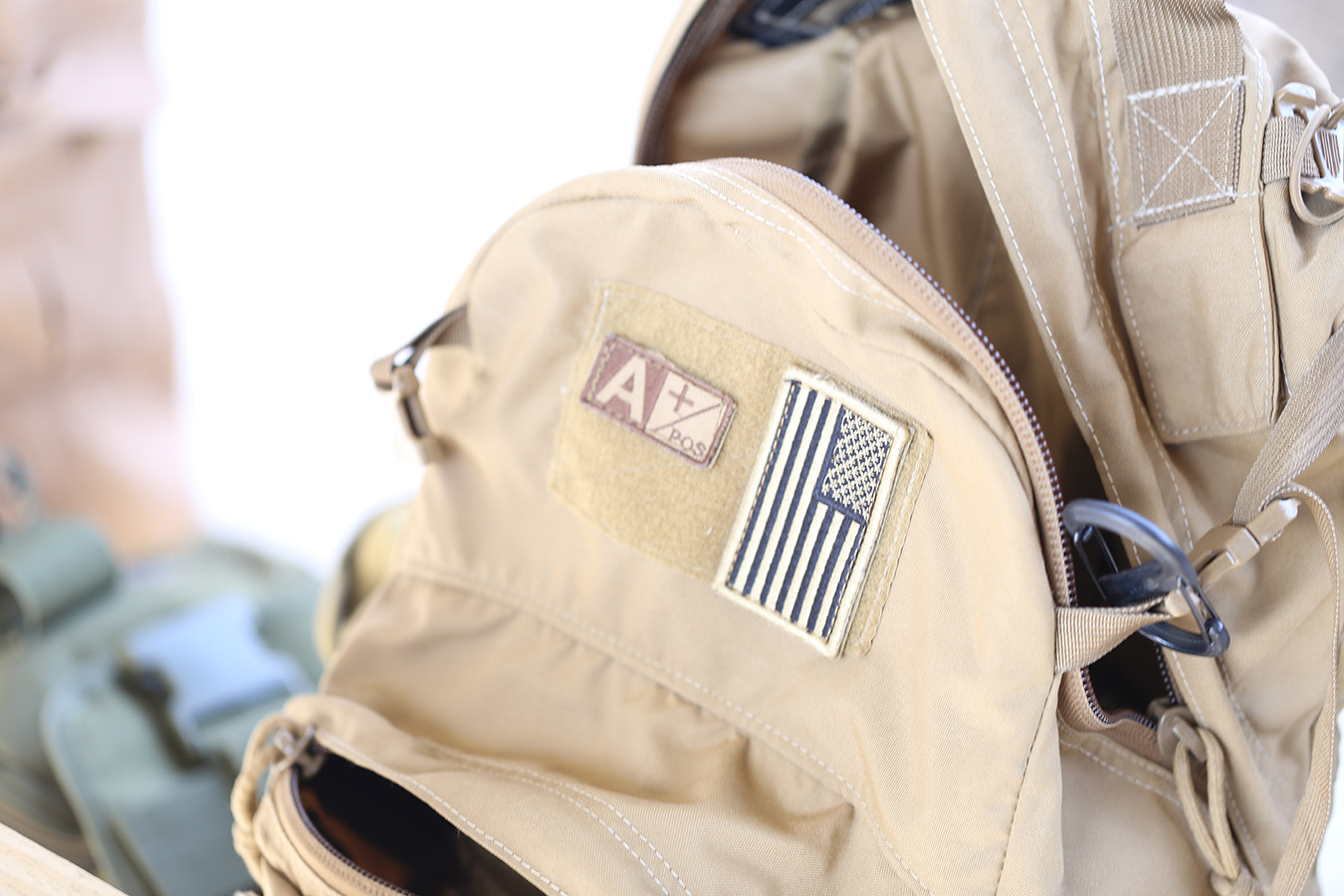
ESTABLISH PRIORITIES
Since scarcity is rare, most people will set their priorities by reaction. They’ll jump on whatever seems to be in high demand, even when the demand is self-propagated by others doing the same. In some cases, this can even be counterintuitive to basic survival.
When COVID-19 first appeared in the U.S., people packed into grocery stores trying to buy as much toilet paper as possible. In some cases, individuals filled their carts with thousands of rolls of TP, while the canned goods aisle went untouched. As many have already mentioned, bathroom tissue is only useful if there’s plenty of food in the kitchen.
The problem with this reactionary buying is that you’ll always be chasing the scarcity, rather than building a reliable supply of essentials. In other words, don’t buy a saddle unless you can afford the horse.
Since you’re reading this article, you’re already ahead of the curve, so congratulations. Your first step to preparedness is understanding your priorities. You want to start at basic necessities then move your way down to conveniences. In basic triage, survival priorities are well-established:
1. First Aid and Protection
2. Signaling and Shelter
3. Water
4. Food
5. Comforts
First Aid and Protection includes items that will save you from immediate and lethal threats. In most natural disasters, this will be first-aid supplies, medication, sanitation, and training. Depending on the severity of the disaster, protection might also include items for personal defense, including firearms, ammunition, and personal protective equipment.

Signaling and Shelter includes items that protect you from exposure. This doesn’t just include your four walls and a roof. In the winter, you’ll need a source of heat if the power goes out. In the summer, you need ventilation to prevent heatstroke. If you live in an area with flooding or regular wildfires, this category includes signaling devices, which help rescue teams locate you.
Water includes supplies that provide drinkable water and hydration, such as stored water jugs or tools that purify water for safe consumption. At minimum, your plans should include a gallon of water a day per person.
Food includes both food and cooking supplies. If you lose power, you need a way to store and cook food.
Finally, we have comforts. Things like toilet paper. These are often the first to disappear in disasters, but they’re also the least essential.
Depending on your environment, you may face a number of different potential disasters. That’s why it’s important to tailor your priorities based on what’s most likely. Give serious thought to the most common causes for ‘bugging-in’, and use that to start a checklist of essential gear.
ESSENTIAL ‘BUG-IN’ DISASTER SUPPLIES
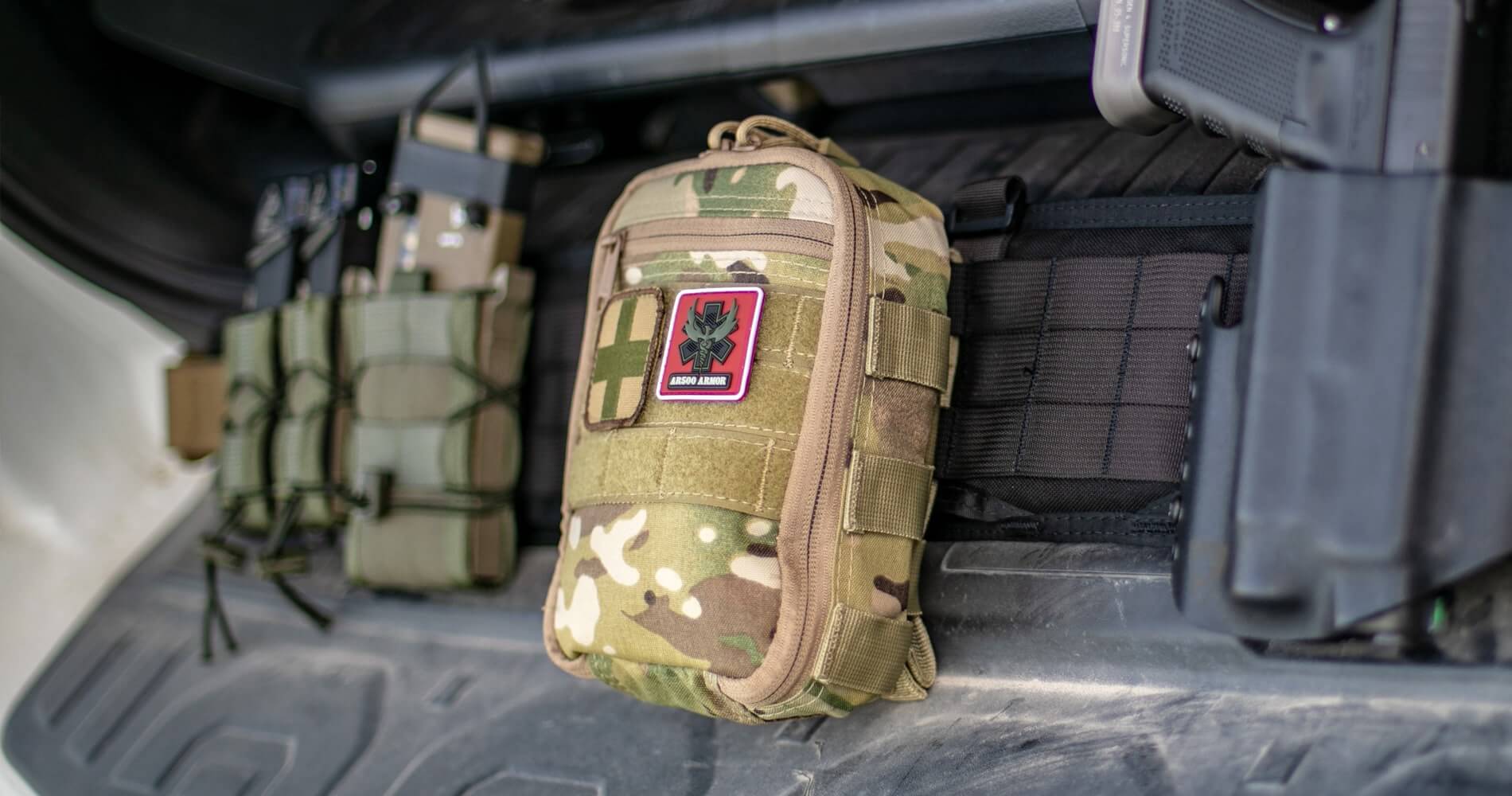
FIRST AID AND PROTECTION
Beyond a basic boo-boo kit, every household should have a serious trauma medical kit, including tourniquets, bandages (not just band-aids), disinfectant, and emergency prescription medication. Since we’re focused on preparedness inside the house, there’s no limit to what you can reasonably store. As many have learned, anti-microbial protection is invaluable in a time of need, and outside of shortages, protective masks and gloves are affordable.
We carry pre-filled first aid kits that will include most of your trauma needs, but the most important part of first aid is training. If you haven’t taken a trauma medicine class, we highly recommend it. Learning the basics of medicine can literally save your life—and lives of many others.
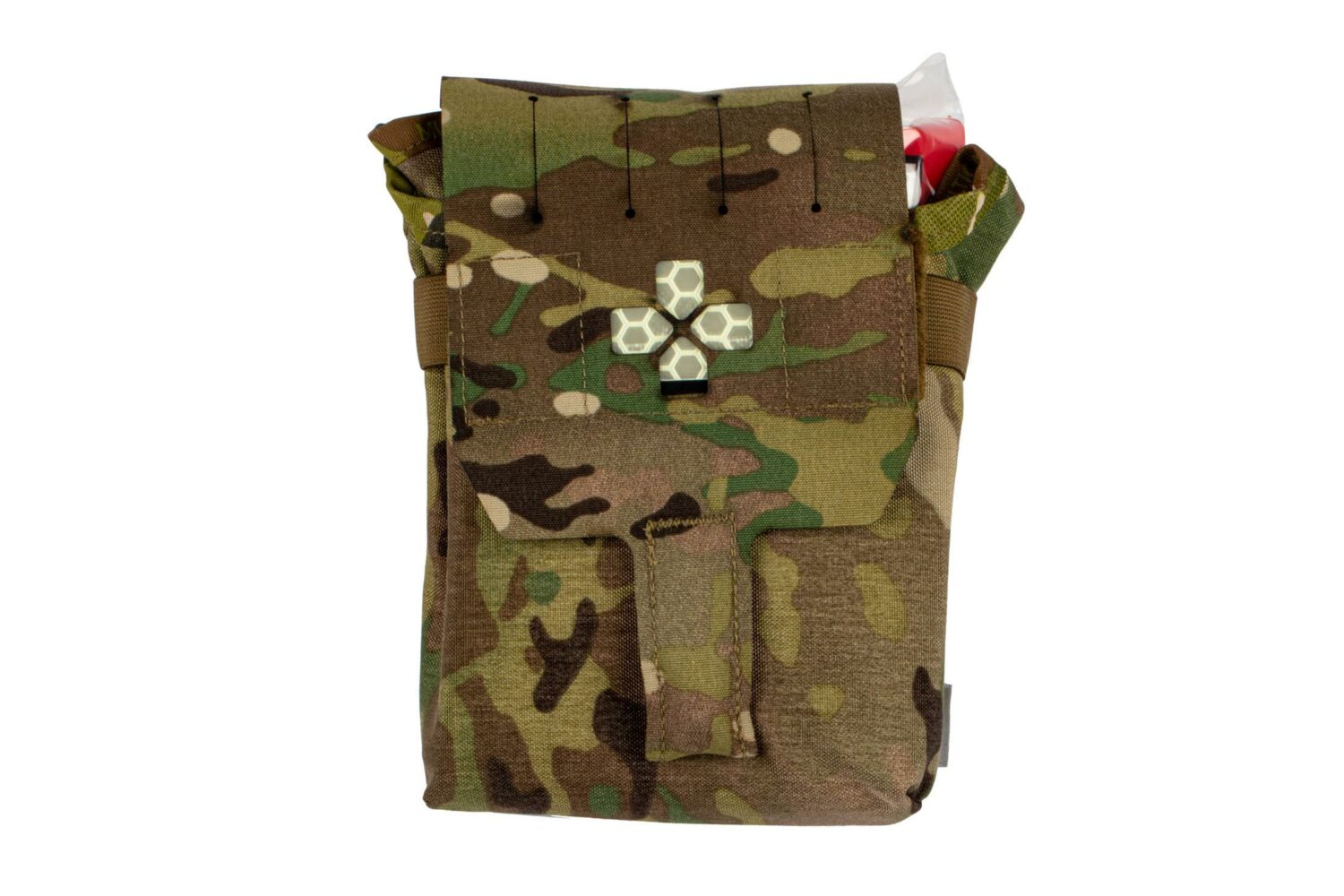
Beyond First Aid, you should consider your personal defense. Disasters can create all types of chaos and disorder. In desperate circumstances, a firearm can be your best lifeline. We recently wrote another blog about personal protection, which detailed the basics of selecting a firearm for home defense.
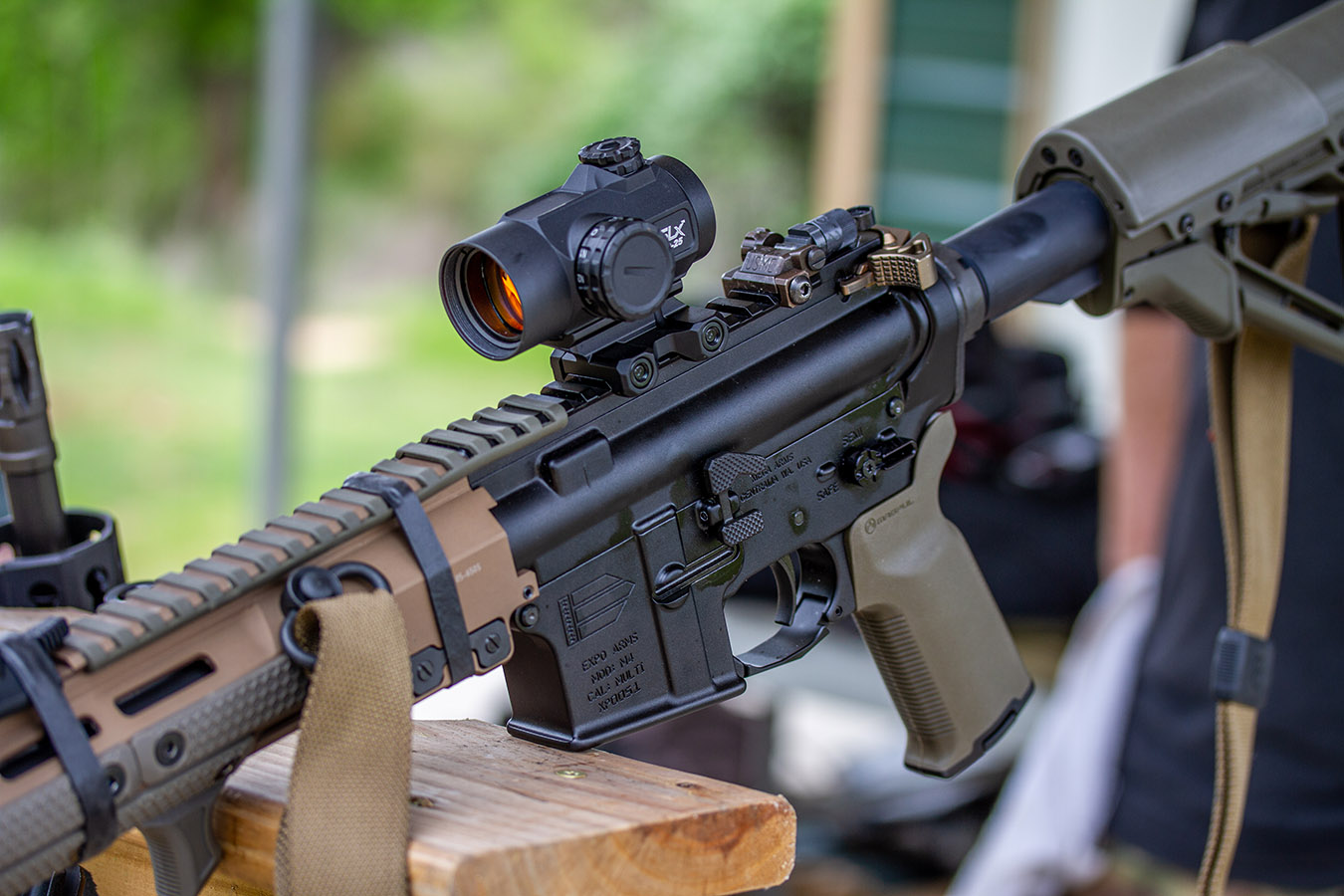
Our recommendation is straightforward: a rifle, shotgun, or pistol with plenty of practice and quality ammunition. Whatever firearm you own, it’s only as effective as you are, so train with it regularly, and keep a sizable stash of ammunition for when shortages start.
We recommend separating your ammo into two categories: one for defense and one for practice.
In shortages, the first ammunition to run dry is the practice ammo, as it’s often the most affordable. These shortages can outlast the disaster itself, so if you’re an enthusiast, you’ll want to maintain a steady level of practice ammunition at all times.
When you buy ammo for defense, don’t cut corners. High quality ammo is more effective and reliable than most basic range ammo. If your life is at risk, the difference in ammo price will not matter to you, but the ballistic effectiveness will.
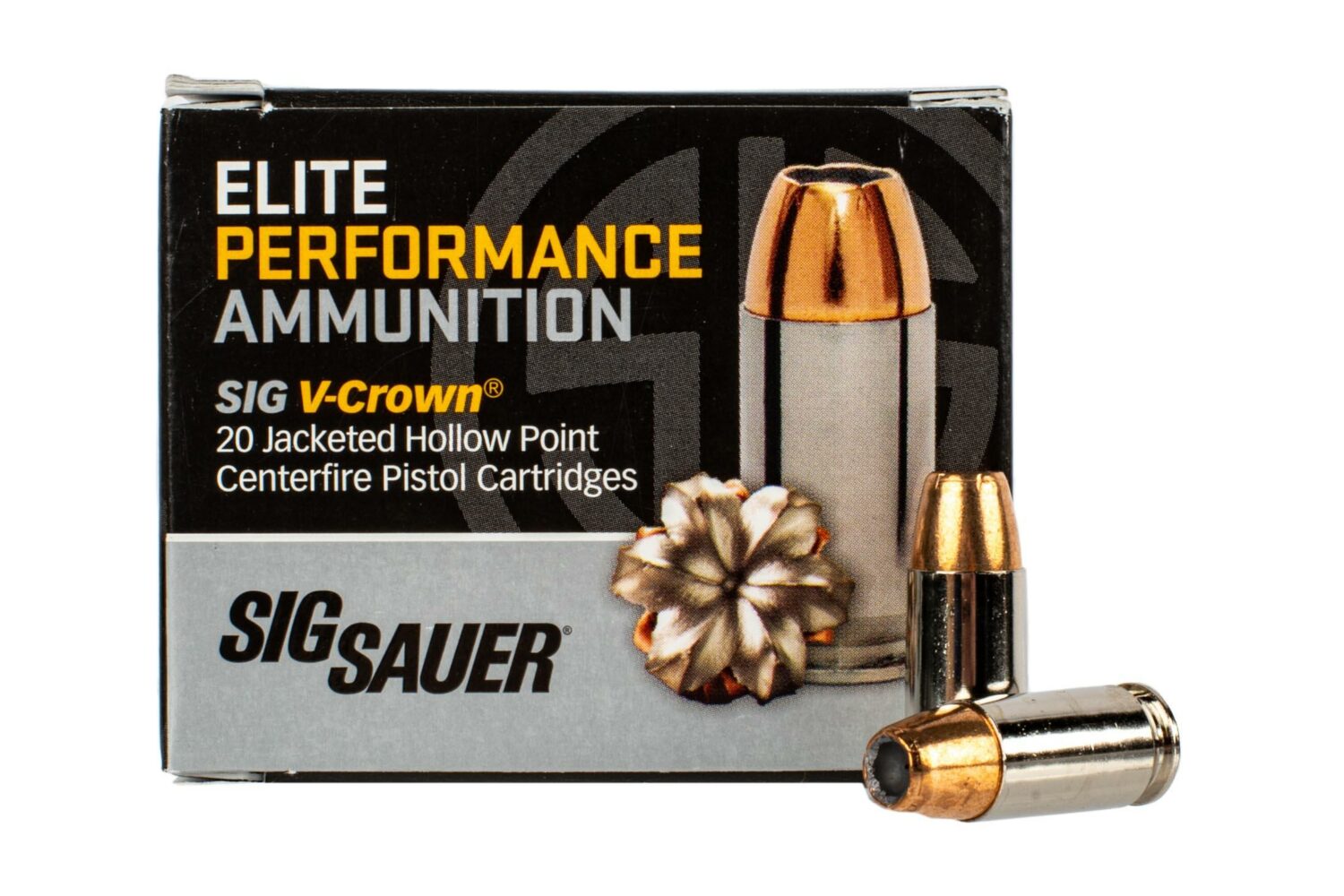
SIGNALING AND SHELTER
This will depend a lot more on the type of disasters you might face.
In most cases, shelter preparation is based on power outages. For short-term continuance, a generator can help keep some vital electricity flowing, but it will require storage of fuel in addition to the generator itself. Generators are great for hurricanes and storms, which do a lot of short-term infrastructure damage.
For cold weather, you may also need a heater or a wood stove. Most northerners already have a backup heat source if needed, but many southerners are underequipped. For urban areas, kerosene heaters are a great way to maintain warmth without the need for electricity or lumber. In suburbs or rural areas, wood stoves or fireplaces do a great job, plus they can be used for cooking and boiling water.
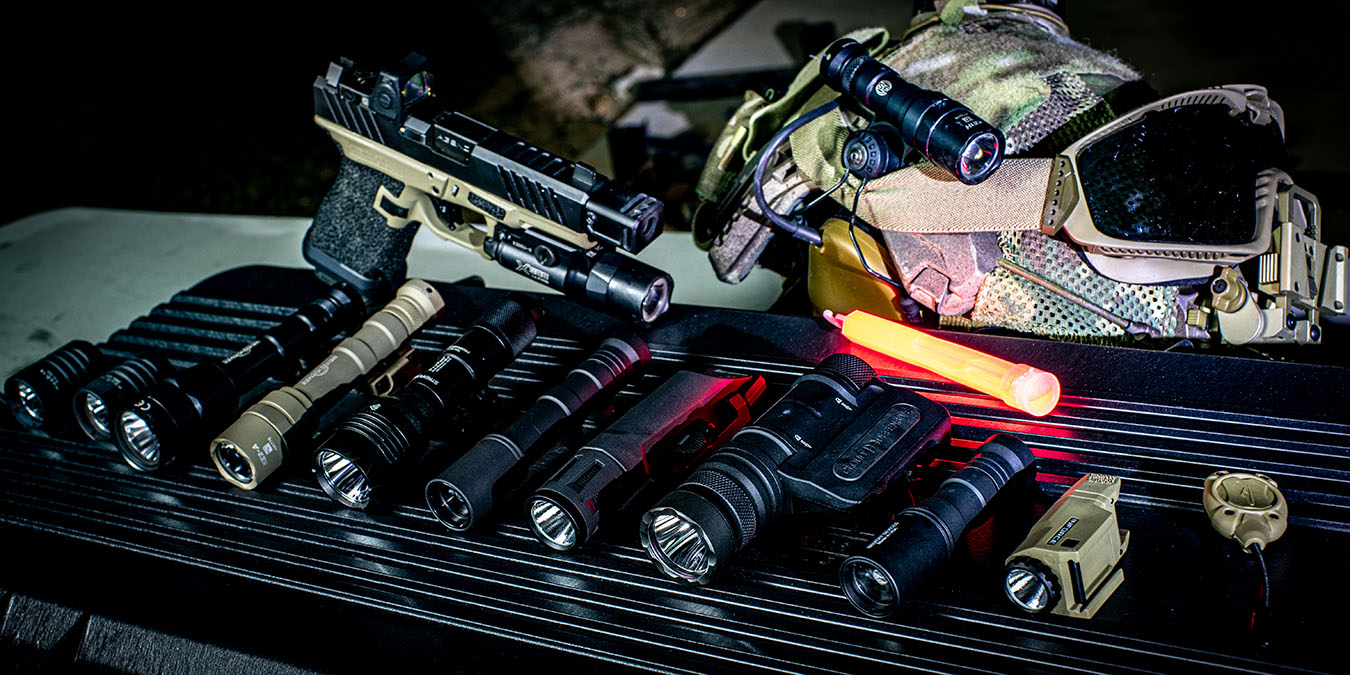
You should also have some signaling tools as well, just in case you need to signal to rescue teams for any reason. A signaling mirror is good and affordable, but flares and glowsticks will give you visibility in the dark. We even carry IR glowsticks for signaling helicopter rescue teams at night.
WATER
You can’t go long without fresh water. Fortunately, there are some awesome products and techniques out there that can really limit your risk of dehydration.
In general, there are two options for water preparation: storage and purification.
It’s easy to buy a few gallons of water and keep it in a fridge. That could get you through a couple weeks, but it’s impractical for long-term prep. If you’re going to store fresh water, invest in a specialized container, like a UV-resistant water barrel, which should be stored in a cool, dark environment away from any chemicals or contamination. This water will stay safe for much longer, and you can pump it into smaller vessels as needed.
You can also purify water for drinking. Note that purification is not the same as filtering, however, so you’ll need a way to filter the water as well. One popular choice is a product called LifeStraw, which filters and purifies water for safe consumption. It’s easy to use, affordable, and can last for years.
FOOD
Though food is a lower priority than water, it is simultaneously harder to solve. There is no easy way around disaster food storage other than keeping a back of emergency essentials at-the-ready.
MREs are handy for saving space and weight, but they have a few downsides for bug-in planning. MREs are expensive, and many of the flavors aren’t that good. Plus, anyone who eats MREs regularly can tell you that constant MREs will take a toll on your digestive system. Only choose to save MREs for worst-case or bug-out scenarios, where carrying a bunch of jars and cans is untenable.
Non-perishables and canned goods are usually the best answer when bugging-in, since you’re not transporting your food anywhere. Many preppers seek to build a food storage that lasts over a year, but that’s a lofty ambition for most average Americans. Shopping at wholesalers, you should be able to secure 3-4 months of non-perishable foods, which is still overkill for most common disasters.
You’ll also be surprised to find just how many foods are viable for long-term storage. If something bad happens, you don’t want to be stuck eating rice and beans every day. Morale is important, so be sure to supplement any emergency kit with a variety of flavors.
For more information, I recommend reading this article from Urban Survival Site. It’ll detail much of the basics in food storage, including all the different options you’ve got for both store-bought and self-sustainment.
COMFORTS
When talking about comforts it’s all personalized.
Once the high priority items are covered, you can supplement your supplies with morale-boosters. Think about hygiene, snacks, entertainment, and pleasantly scented candles.
When power and water both go out for weeks at a time, you’ll need that pick-me-up.

ENHANCING PERSONAL DEFENSE
Personal defense is our specialty, so we’d like to offer a little bit extra. If you want to go beyond the basics, there are some larger investments that will further guarantee your health and safety.
A lot of people think this starts with HAZMAT gear: gas masks, NBC suits, and stockpiles of filters. These items are good… if you have an expert knowledge of CBRN protocol, a trained team, and reliable decontamination. For the average individual, a gas mask and filter are useful, but they’re overkill for anything that would allow you to stay in your home.

Start with training. Take classes with expert instructors. Learn medicine, firearms, and wilderness survival skills. There are hundreds of great books on these foundational skills, which humans have relied on for hundreds—or sometimes thousands of years.
If you’re interested in taking classes, consider pursuing a radio certification as well. Communications are important through any disaster, and standard phone lines may be inaccessible. Basic radios aren’t expensive, but they take training to operate effectively. When signaling for rescue, a radio can make all the difference.

For those serious about personal defense, I strongly recommend body armor. Many gun-owners purchase a firearm for the purpose of protecting their life against armed attackers. If you are concerned about protection within your own home, you should be giving yourself every possible advantage to come away unharmed. Body armor is life-saving equipment that protects your vital organs while adding another level of deterrence against potential threats. In a gunfight, body armor is a game-changer, dramatically improving the survivability of those who wear it.
Ballistic helmets provide that same protection for your head—at least against pistols. The price on helmets has dropped substantially over the years, and basic ballistic helmets can be sourced at only a couple hundred dollars. Plus, with a helmet, you can foray into night vision, which is a subject so expansive that we’ll save it for another blog.
That said, your best defense against any attacker is your own front door. If you’re planning for bug-in, you need to think about your house as its own little fortress. This can be as simple as planting beautiful (albeit prickly) bushes outside your most accessible ground-floor windows. Most attackers intentionally avoid homes with difficult entry, so be sure to take a critical look at your home’s vulnerabilities when creating any defensive plan.

CONCLUSION
Right now, preparation is on everyone’s mind. As store supplies are replenishing, many Americans will be looking to best equip themselves.
Don’t give in to anti-prep stigma or nay-sayers. If you feel any desire to better prepare yourself, follow it. In a disaster, you’re the only one that you can count on, so always take the leading role in your emergency preparedness.
And, if there’s one thing to learn from human history, it’s this:
No one ever complained about being too ready.



